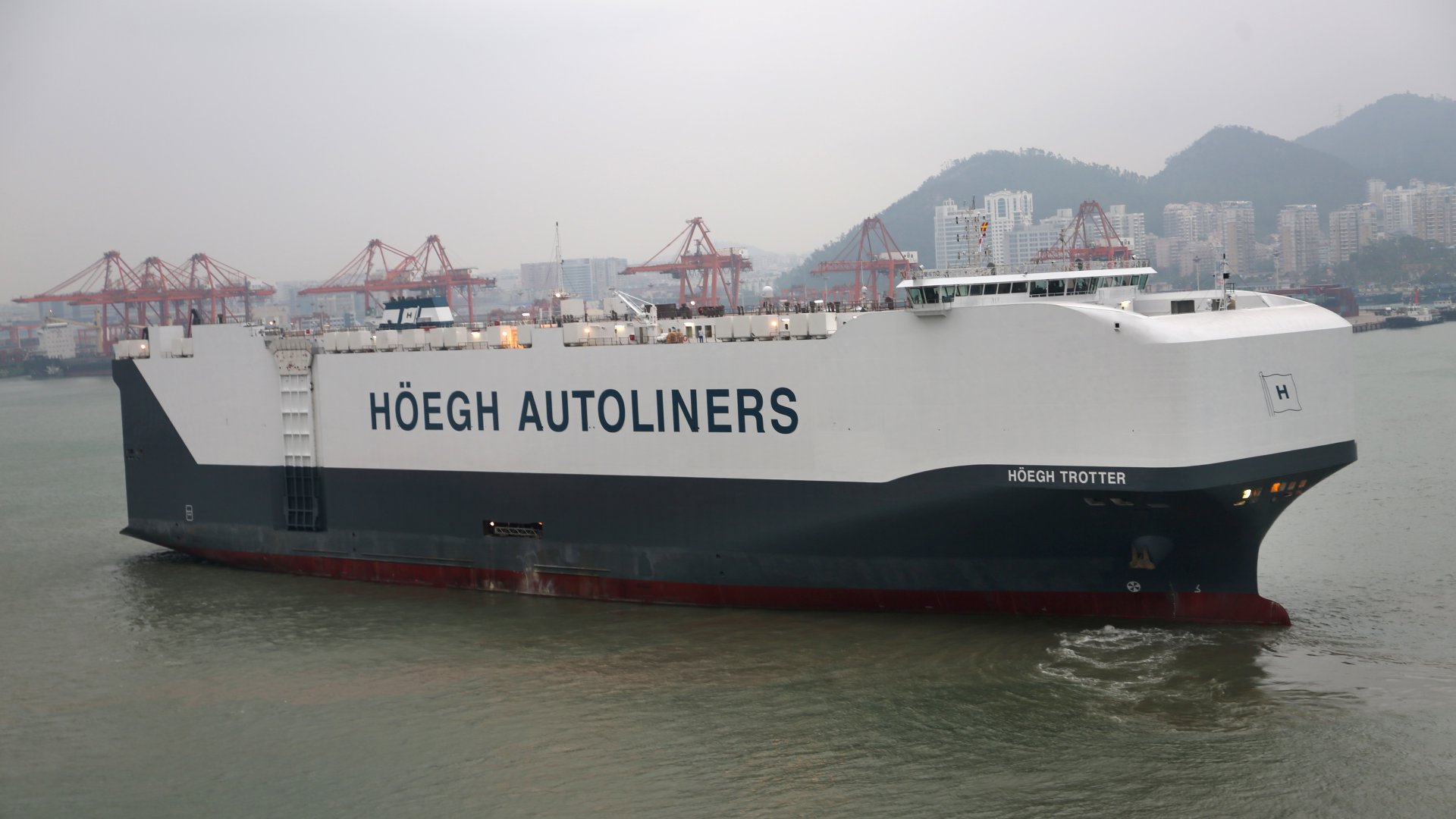Ever wondered how cars and trucks get transported from one continent to another? The answer is RoRo – a special kind of ferry, allowing vehicles to roll onto a ship in one port, and roll off in another.
Some argue that the first RoRo vessels emerged during the Crusades, except the cargo did not roll, but instead trotted aboard on its own four legs across a special wooden ramp. Similarly, when engines and steel-wheels replaced hooves in the 19th century, loading vehicles with cranes quickly proved a slow and tedious process. To solve this problem, British engineer Thomas Bouch invented what is now considered the first modern Roll-on/Roll-off – the Leviathan. Designed to haul wheeled cargo across the Firth of Forth, she had a ramp with rail tracks, allowing wagons to roll on and off at port.
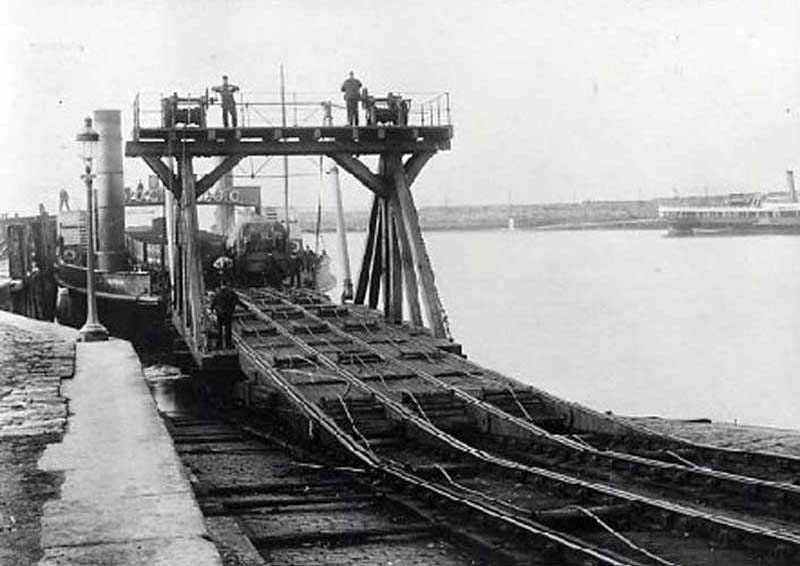
The train-ferry gained popularity on a local level, but a century had to pass before the RoRo concept found its mainstream application with road vehicles. It was World War II that sped up the development of ocean-going carriers, and as demand for private cars soared after the war, the RoRo vessel made a quick transition to the civil sector.
Modern Development
Contemporary RoRo vessels come in different variations – they can carry cars only (pure car carriers), cars and trucks (PCTC), a combination of containers and wheeled cargo (ConRo), roll-trailers and stowed cassettes (StoRo), military vehicles, as well as a combination of vehicles and passengers (ROPAX). A few may also have decks that are only loadable by cranes and are referred to as “roll-on, lift-off” (RoLo). All types have hatches at the stern, bow, or sides, which open to become boarding ramps. Some vessels and ports allow for loading through two ramps simultaneously, usually one above the other, making cargo handling even more rapid. Car decks do not have transverse bulkheads and typically run through the entire length of the ship to make loading fast and efficient. Lower and upper decks connect through internal ramps or elevators.
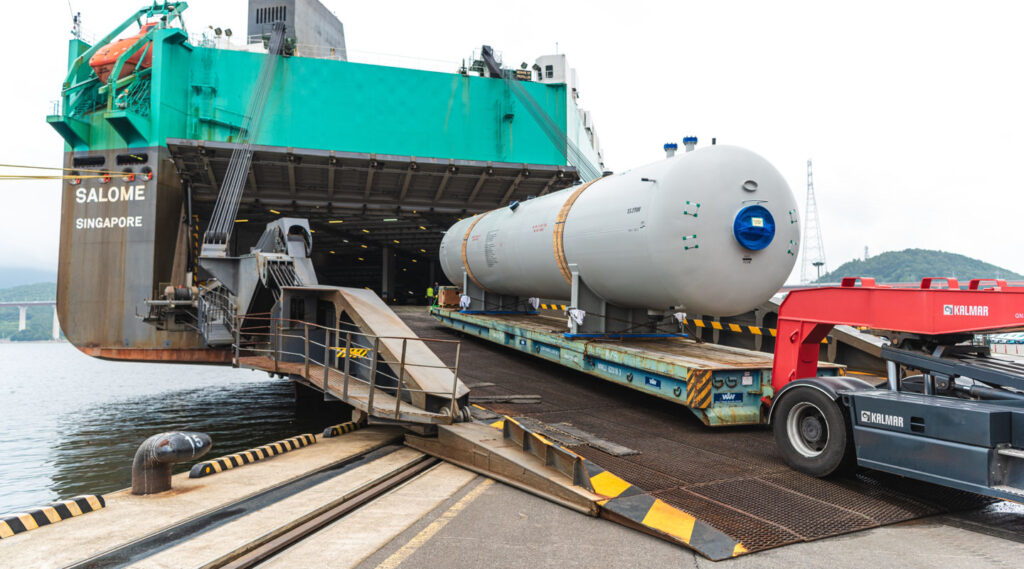
Some of the largest RoRo vessels are the New Horizon-class PCTC, built by Xiamen Shipbuilding Industry (XSI) in China for Höegh Autoliners. These post-Panamax ships are 199.9m long, 36.5m wide, and have gross tonnage of 76,420 tons. Their 71,400 m2 deck area is spread over 14 cargo decks, 5 of which are hoistable, allowing for a total capacity of 8,500 car equivalent units (CEU). Decks are reached through a liftable system of internal ramps, allowing efficient use of cargo space. Loading ramps have carrying capacity of 375 tons, while the hull-opening allows cargo height of up to 6.5 m.
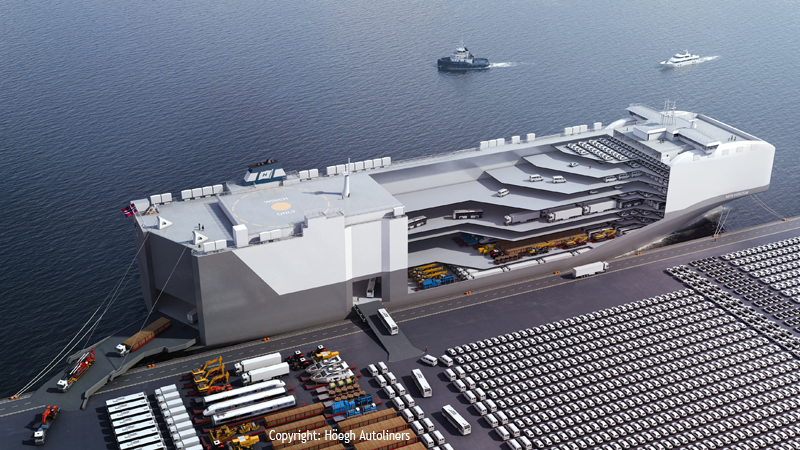
New ships are designed to be more environmentally friendly than their predecessors, with features such as double hulls to reduce fuel leakage, advanced ballast-water treatment systems, optimized engines to reduce nitrogen and sulfur-oxide emissions, energy-saving LED lighting, as well as improved hull-designs for lower energy consumption.
Are RoRo Ships Safe?
Modern RoRo vessels are easy to recognize from the outside with their high side walls and no portholes. The large surface area of the walls poses a challenge in strong winds, as ships risk going off course. A bigger problem arises from the large cargo openings in the hull, posing potential risks if not properly secured before departure or while sailing. In such cases, hull openings and lack of transverse bulkheads in the cargo decks can allow large ingresses, with the sloshing water creating a free surface effect and rapid critical change in stability.
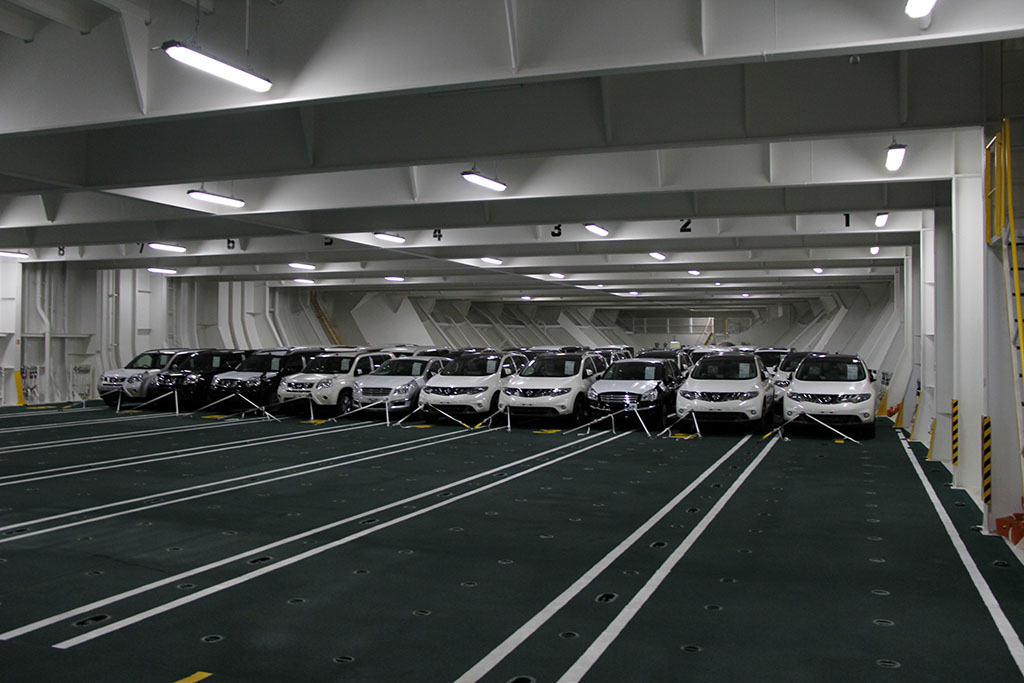
The MS Herald of Free Enterprise is perhaps the most notorious example of these dangers. On 6 March 1987, shortly after leaving Zeebrugge, Belgium, an unclosed bow door led to flooding of the hold, causing the ferry to capsize within 90 seconds of leaving port. The accident killed 193 passengers and crew.
On 28 September 1994, the Estonia passenger ferry capsized during a storm in the north Baltic Sea, sinking with more than 850 souls on board. The investigation concluded failure of the bow-visor locking mechanism under the impact loads of the waves. The final report attributed this to poor design, unable to withstand the necessary loads – a claim disputed by the shipbuilder. Water entering the vehicle deck caused loss of stability, followed by further flooding of the accommodation decks. In September 2020, while filming a documentary about the Estonia, an underwater robot recorded a previously unknown 4×1.2 meter hole in the ship’s starboard side hull, prompting a new investigation of the accident.
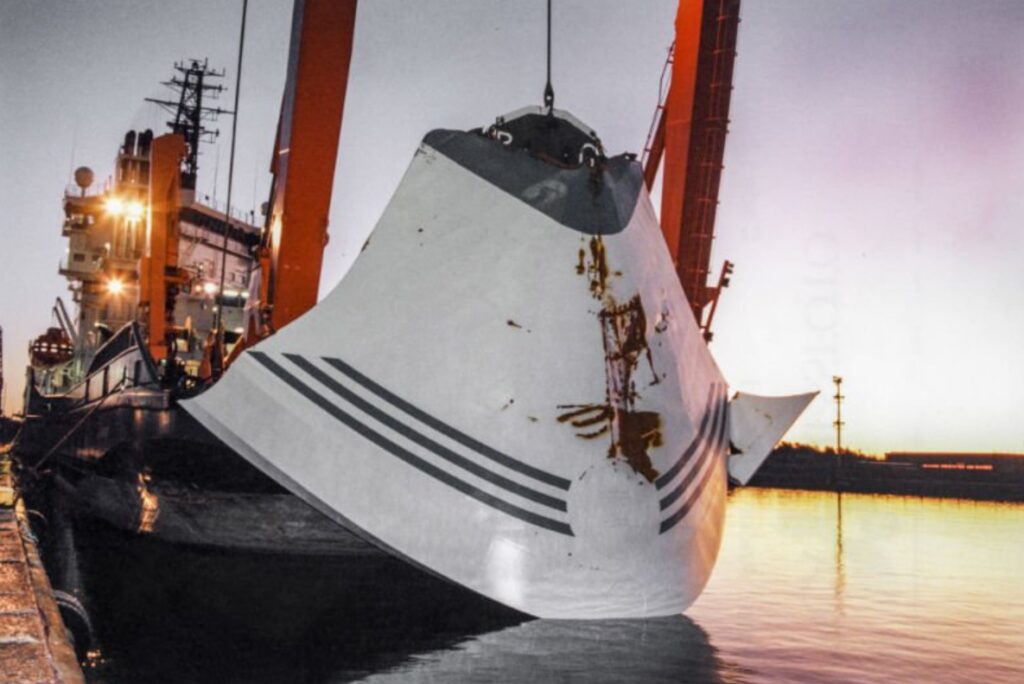
The loss of the Herald of Free Enterprise and the Estonia led to a number of amendments to the International Convention for the Safety of Life at Sea (SOLAS), including the requirement for open-door indicators, water-detection sensors, and emergency lighting. A further amendment called for the installation of motion detectors throughout the vehicle decks, which would signal cargo shifts in rough weather, as well as any unauthorized human presence.
But despite amendments in regulations, further accidents involving RoRo ships have occurred in recent years, such as the capsizing of the Cougar Ace in 2006 and the Höegh Osaka in 2015.
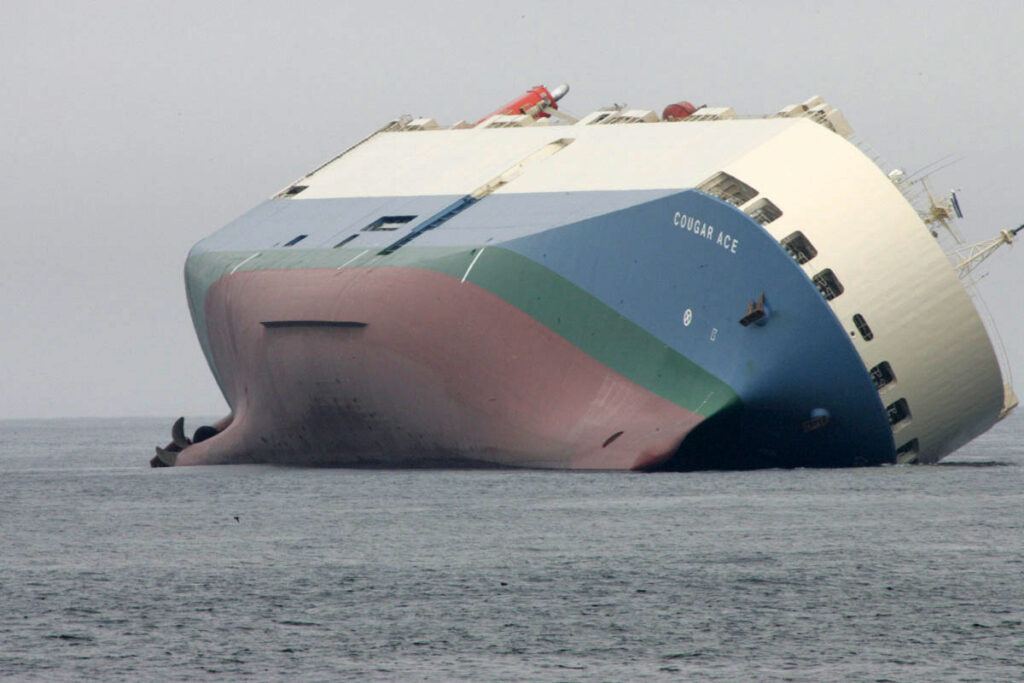
Another notable event occurred on the night of 8 September 2019, when the MV Golden Ray ran aground and capsized near Brunswick, Georgia, with 4,200 motor vehicles on board. In the salvage operation that followed, the fuel was pumped out and the wreck was cut up on-site with giant steel chains. The US National Transportation Safety Board identified the cause of the accident as errors in the stability calculation of the ship. Luckily, none of these three accidents led to loss of life.
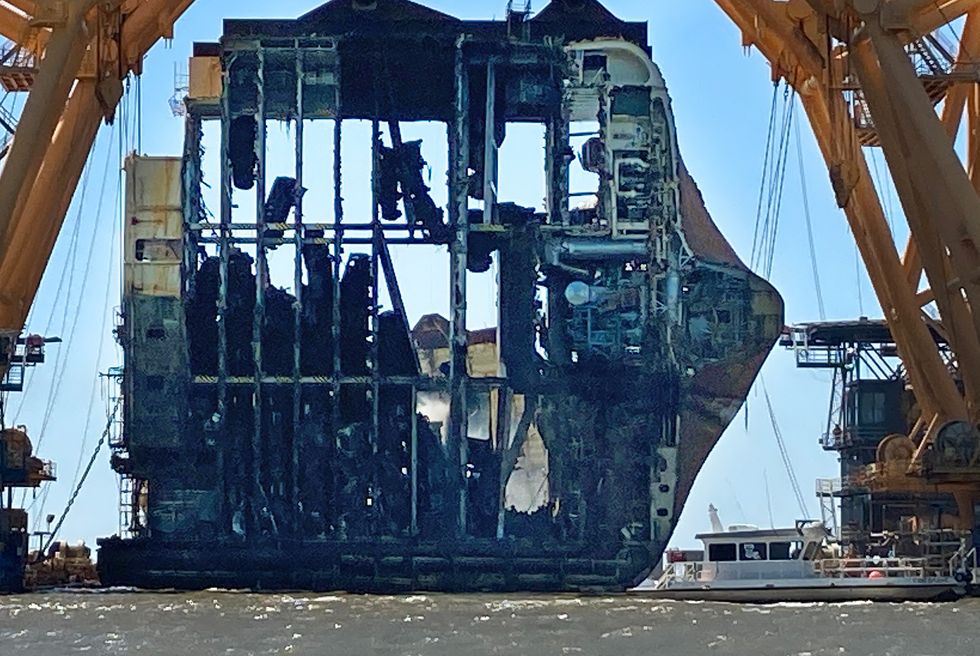
Such cases have earned RoRo ships the derisive nickname “roll on, roll over”, but despite this notoriety, they safely carry over a billion passengers, 150 million cars, as well as 25 million buses and trailers every year. Their efficiency and flexibility place them among the most commercially successful merchant vessels sailing the seas today.
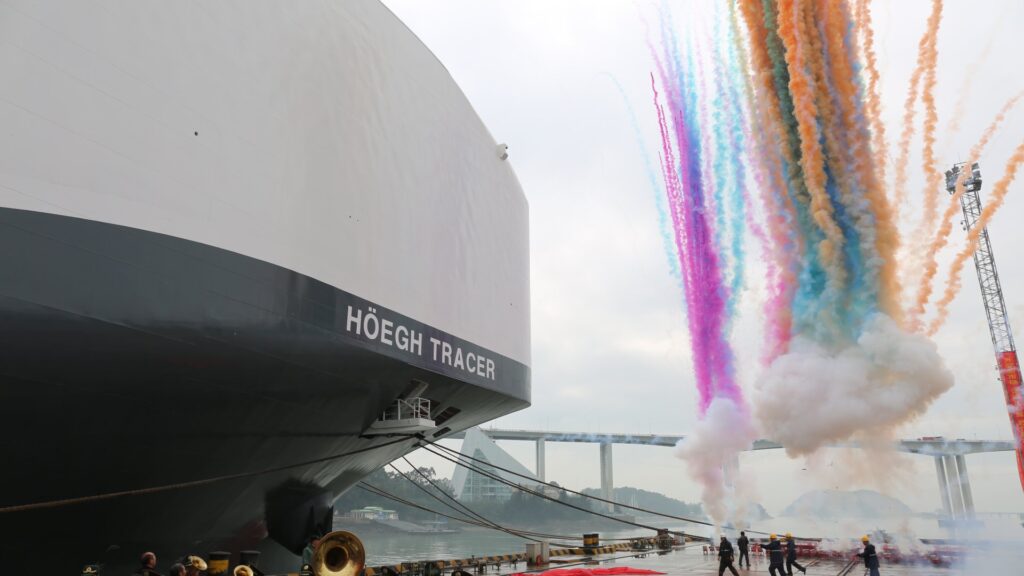
The Shipyard
P.S. Want to find out more about ship stability? Click here to find out how ships stay upright!

